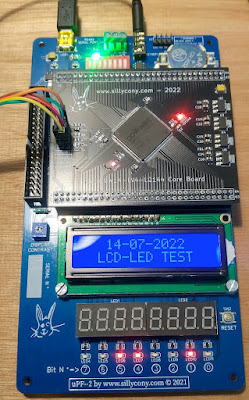It must be recognized that when one has tasted these GoWin circuits and the simplicity of the development software, it becomes very difficult to resist the urge to use them for a whole host of projects.
I had the opportunity, a few months ago, to replace an Intel FPGA-based module with a GoWin module that I made myself, in a project to rebuild the Micro-Professor MPF-1b:
 |
| Multitech - MPF-1 / MPF-1B |
The result was that :
I also use a GoWin FPGA in the final version of my MIDI switch. It works very well.
So why not continue with the recreation of an SP12? In fact at first I wanted to recreate a Drumulator. But given the work done on the subject and the little difference in fact with an SP12, I decided to go with an SP12.
So I gathered the majority of the digital part as well as the sampling in both directions on a small FPGA-based board.
It should look like this:






